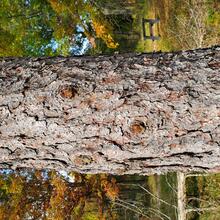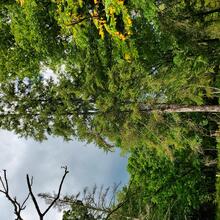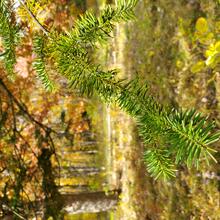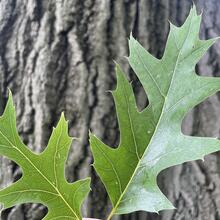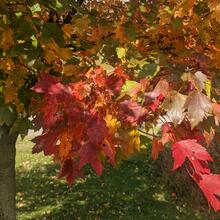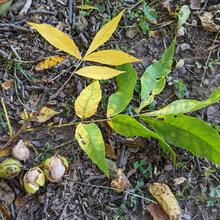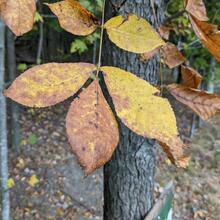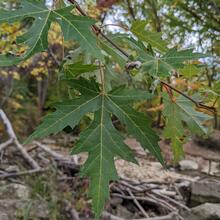Abies balsamea
Pinaceae
Evergreen tree with large upright seed cones. Prefers soil with humus/organic material. Popular as a Christmas tree, it has strongly scented sap and needles.
Summary
 Climate Tolerance
Climate Tolerance
Very Poor
Wildlife Benefits
Seeds food source for songbirds, squirrels; moth/butterfly host
Pollination Type
Wind
Plant Hardiness Zones
3 to 6
# Butterfly/Moths that use as host
114
Bloom Time
Fall (Sep-Nov)
 Shade/Sun Tolerance
Shade/Sun Tolerance
Full Sun to Part Shade: Receives 2 to 6 or more hours of direct sunlight
 Maximum Height
Maximum Height
Medium (40-75 ft)
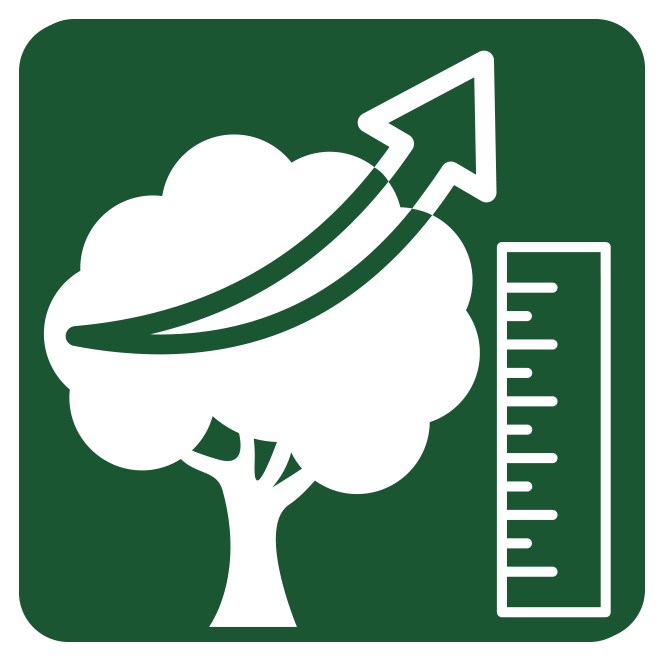 Growth Rate
Growth Rate
Slow: 1 ft or less per year
 Soil Type
Soil Type
Clay: Small sized particles. Long moisture retention and low nutrient availability.
Loam: Equal mix of clay, sand, and silt. Moderate moisture retention and high nutrient availability.
Sand: Large/coarse particles. Short moisture retention and low nutrient availability.
 Soil Moisture Tolerance
Soil Moisture Tolerance
Moist: Soil can remain damp and does not normally retain standing water
Root - Fungal Association
Ectomycorrhizae: Symbiotic relationship with fungi that exist on outside of plant root cells, facilitating nutrient uptake
Pest & Pathogen Risks
Medium; Spruce budworm
 Urban Stress Tolerance
Urban Stress Tolerance
Low: Tree will not grow well in the urban environment
Drought Tolerance
Sensitive: Tree will become stressed during periods of drought
Native Status
US-Native: Species is not native to Ohio, but is native to the United States
NatureServe G-rank
G5
Plant Community Type
- Beech Mixed: Absent
- Oak Mixed: Absent
- Alluvial: Absent
- Red Maple Mixed: Absent
- Ruderal: Absent
Bloom Color
Yellow
Green
Purple
Brown
Form
Tree
 Lifespan
Lifespan
Short: Less than 100 years
Soil pH
Acidic (pH<6.8)
Wetland Indicator Status
FAC: Facultative, occurs in wetlands and non-wetlands
Soil Compaction Tolerance
Tolerant: Tree will not become stressed from soil being compacted
Heat Tolerance
Sensitive: Tree will become stressed from increased temperature due to urban heat island effects
Salt Tolerant
Sensitive: Intolerant to either aerial salt spray and/or salt present in soil
Native County Status
Not Native to NE Ohio
IUCN Red List Assessment
Least Concern
